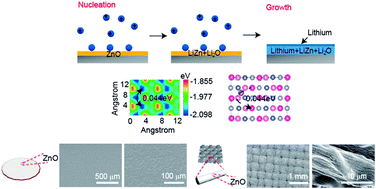Understanding the molecular mechanism of lithium deposition for practical high-energy lithium-metal batteries†
Abstract
Lithium metal is considered as one of the most promising anode candidates for high-energy lithium-based batteries. However, batteries using lithium metal encounter many issues, such as lithium dendrite formation and huge volume fluctuation. These issues become significant when using ultra-thin lithium metal anodes in order to achieve a specific energy higher than 350 W h kg−1. Many current studies focus on materials designs of solid electrolyte interfaces and 3D lithium hosts, but there have been few accounts of anode design principles. In this work, the interaction energy between Li and the anode substrate, the diffusion barrier of Li ions near the anode substrate, and the morphology of the substrate are found to be critical factors to achieve uniform lithium deposition. Furthermore, the mechanisms of nucleation and growth of lithium are presented at the molecular level from both thermodynamic and kinetic perspectives. This understanding of the mechanism is expected to help choose and design current collectors and artificial SEIs for stable cycling performance in advanced metal-based battery systems.



 Please wait while we load your content...
Please wait while we load your content...